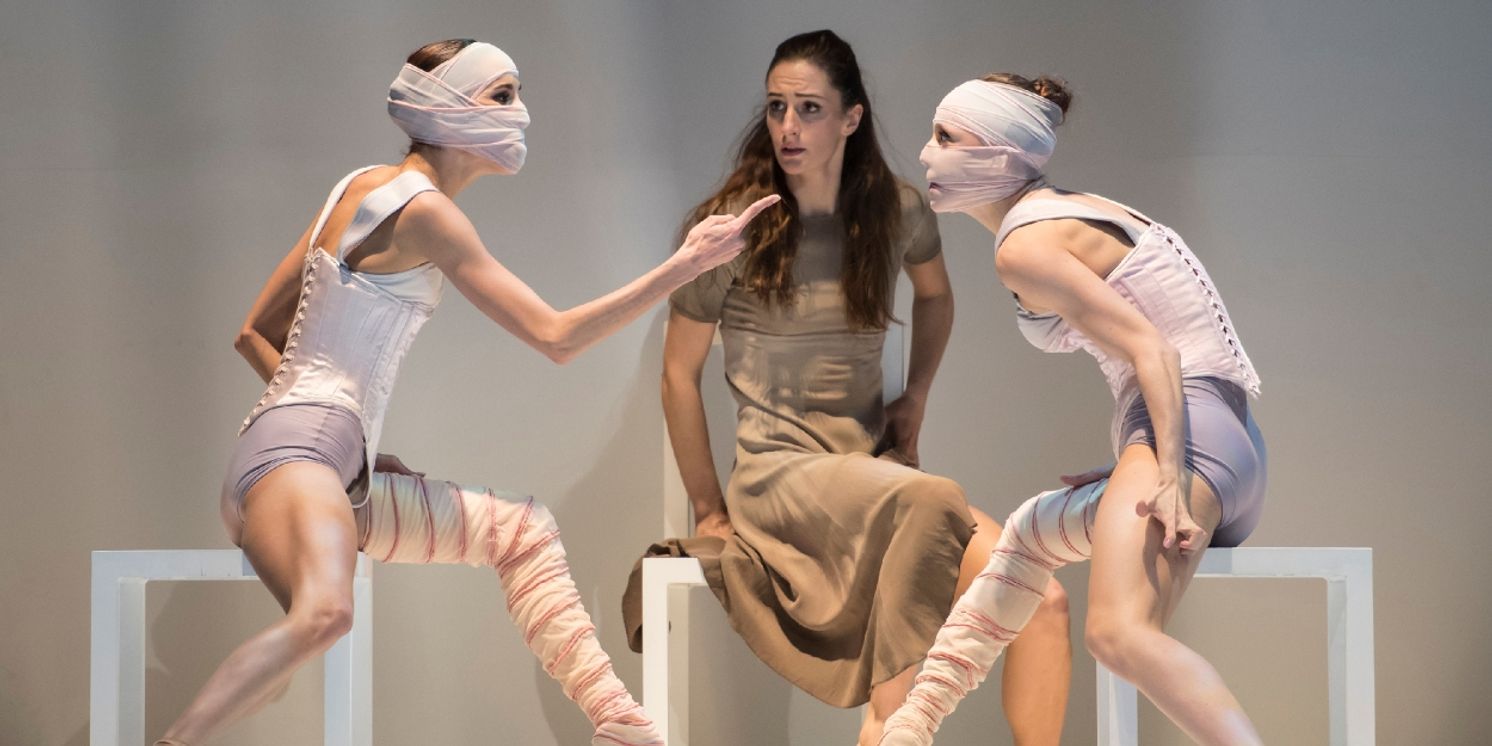Review: CENDRILLON at Eisenhower Theater, Kennedy Center
Les Ballets de Monte-Carlo presents its fabulously weird take on Cinderella through Sunday, November 20.

Everyone knows the story of Cinderella, right? It's about a young woman's exploration of grief and her self-actualization, her father's latent passion for a ghost, and a prince's rejection of decadence.
No? Not the story you remember? Well, it's the story Les Ballets de Monte-Carlo presents in the company's fabulous Cendrillon at the Kennedy Center this week.
Created in 1999 by the troupe's choreographer-director Jean-Christophe Maillot, this reconstitution of the classic fairy tale is frenetic, erotic, emotionally powerful, and often funny. It cleverly plays on our narrative preconditioning, disorients us, then elevates us into its own delightful plane of bizarre esthetics and symbols.
Like John Neumeir of the Hamburg Ballet, a company in which Maillot danced early in his career before sustaining a knee injury, Maillot is a choreographic blender. He combines traditional ballet with modern dance, pantomime, clowning, farce, and large dollops of the ironic grotesque. He also torques gender roles, with men sometimes dancing en travesti, aggressively sensual female leads, and interestingly pliant male principals. In Maillot's world, the normative is not the norm. Also of note, the shoe-fetishistic traditional Cinderella is replaced here with an elemental worship of the bare foot.
The crazily cartoonish creations of costumer Jerome Kaplan complement Maillot's dreamily demented world. So do the un-ostentatiously impressionistic warped trappings of set designer Ernest Pignon-Ernest -- for instance, a hybrid stairway and slide.
Maillot's crowd choreography is tumultuous. The borderline chaos of multiple interactions aids the viewer's suspension of disbelief. Within that, duos, trios, and larger subgroups render, with precision ensemble, movement ranging from the elegant to the timorously twitchy. One suspects that Maillot enjoys nature documentaries, for his on-stage creatures are amusingly feral.
Many of the solos and duets have a Martha Graham-type core- and pelvis-focused power in conjunction with kinetic transfers between bodies that collide in antipathy, power reversals, or ardor.
Maillot has a serious background in music as well as dance. Here he devises motion that is fused with the restless shifting rhythms of Sergei Prokofiev's symphonic score but that also reflects its chordal wanderings and its blend of major, minor, and Lydian scales. Maillot does this, in part, through combining turned-out classical ballet positioning with more austere parallels in arms, legs, and hips. He finds choreographic companionship with Prokofiev's sonic spectrum, from frenzy to intense lyricism. In other words, Maillot and Prokofiev were made for each other and the overall effect is intoxicating.
From an altogether impressive cast Thursday, standouts included Alessandra Tognoloni as Cinderella and Simone Tribuna as the Prince. Their two major pas-de-deux sections, with gorgeous swoops, spins, arcs, and lifts, offered a genuine sense of overpowering, ecstatic love.
Matej Urban's duets with Marianna Barabas, in their roles as the Father and the Fairy/lost mother figure, were also intimate and intricate, conveying the psychological intensity, playful flirtation, and grateful passion of longstanding couplehood. Barabas's Fairy solos in relation to all three of those other principals were shape-shiftingly forceful and mysterious. She radiates strength, will, and benevolence, with just a trace of mischief.
Anna Blackwell is a wonderfully complex Stepmother, clearly wanting the Prince for herself even while dutifully pointing him toward her two daughters. Those stepsisters, Victoria Ananyan and Ksenia Abbazova, are far from the simple bullying laughingstocks of a traditional Cinderella. Now they are angularly seductive but also plainly vulnerable to the horror of their own romantic desperation.
Contributing to the more slapstick elements of the evening were the hilarious Lennart Radtke and Koen Havenith as the Pleasure Superintendents, a sort of antic Tweedledee and Tweedledum of the Prince's court.
The viewer leaves the theater revitalized by the otherworldly shimmering, simmering imaginations of a profoundly bold, beautiful company in excellent form.
**
Run time: Two hours, including intermission
Photo by Alice Blangero, courtesy of Les Ballets de Monte-Carlo
Reader Reviews
Videos

